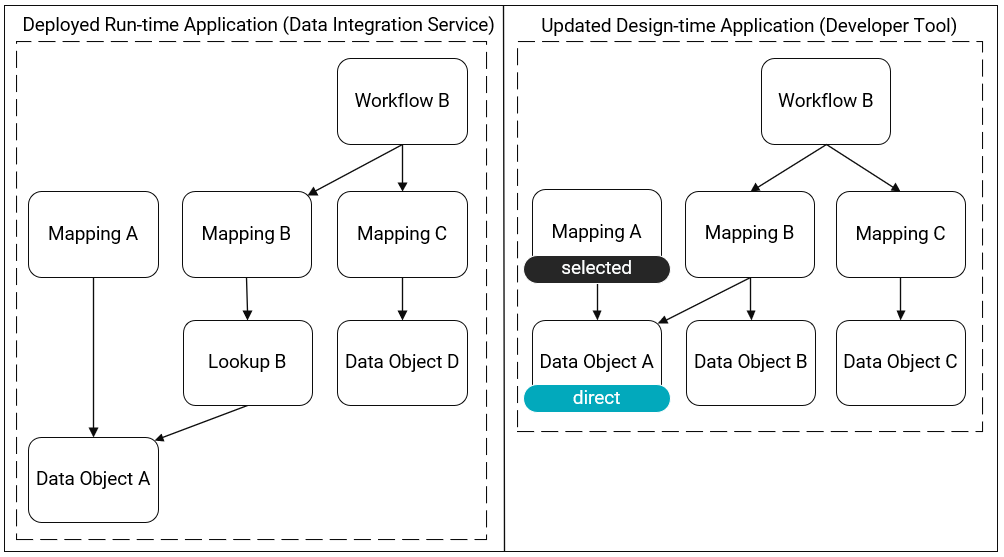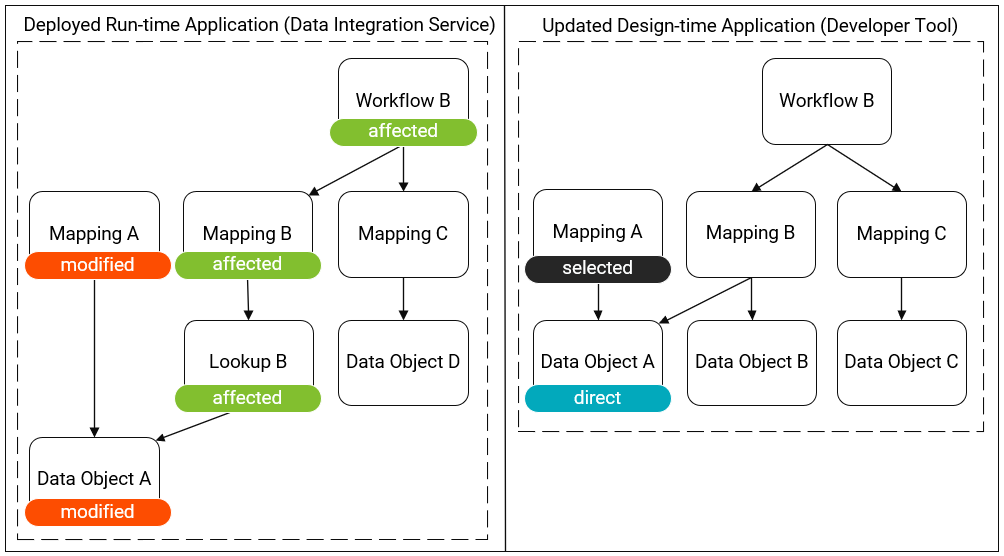Informatica Data Quality
- Informatica Data Quality 10.4.0
- All Products


Type of Dependency
| Dependencies
|
|---|---|
Direct
|
|

Scope Item
| Number of Objects
|
|---|---|
Selected
| 2
|
Updated
| Modified: 2
Affected: 3*
Total: 5*
|
Added
| 0
|
*
The reusable transformation
Lookup B behaves as an affected object at run time, but the Incremental Deployment wizard does not list reusable transformations as affected objects. In the Incremental Deployment wizard, the number of affected objects is 2. | |